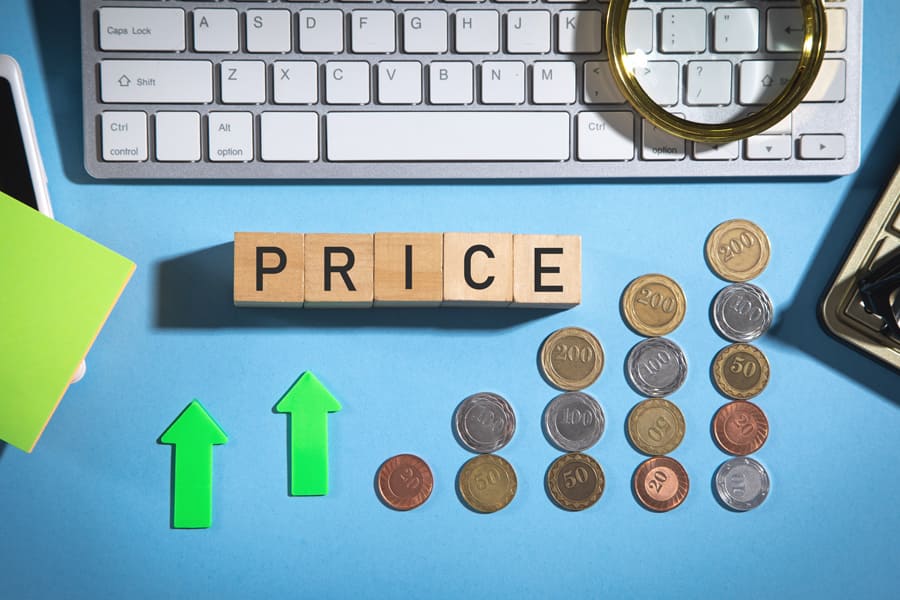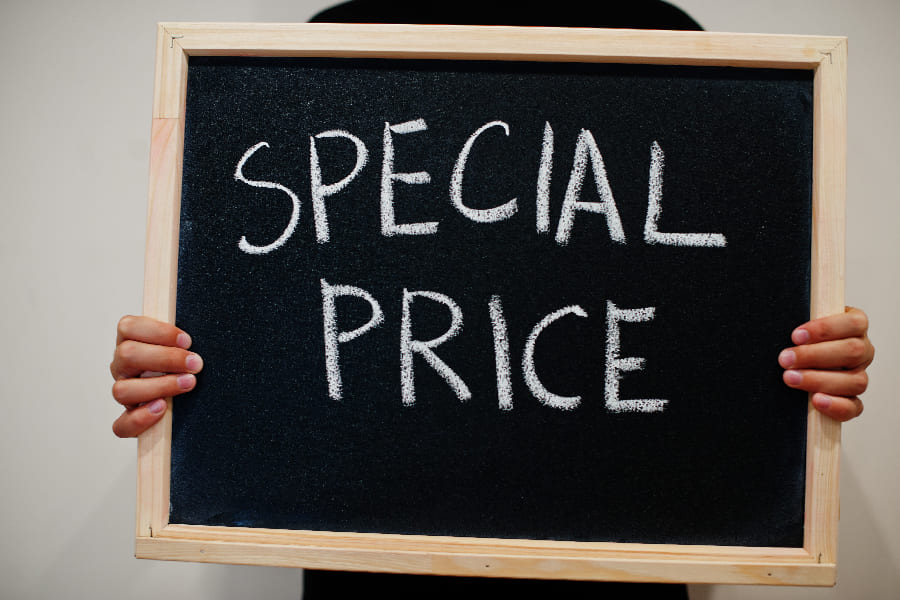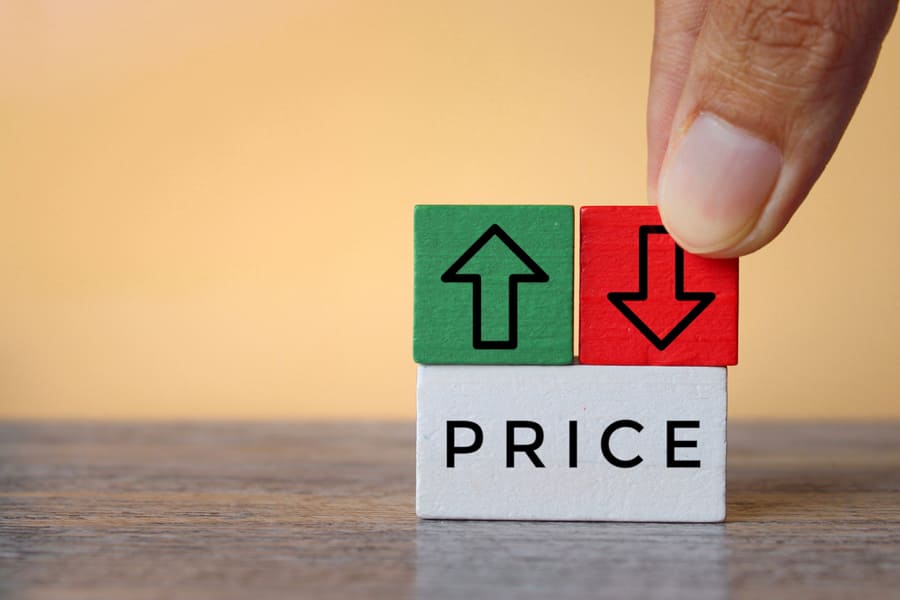An effective pricing strategy is pivotal for the success and growth of a company. You can enhance profitability, boost market share, and get a taste of that competitive edge by simply using pricing models that are right for your business.
With many options available, you know it’s the best pricing strategy when it aligns with your marketing strategy and target market while considering factors like production costs, competitor pricing, and consumer demand.
Several common pricing strategies stand out depending on the product or service, market trends, competition, and customer base. They can be grouped into cost-driven, value-based, or competition-based pricing approaches, each serving a unique purpose and catering to different market conditions and customer segments.
This article delves into an exhaustive list of different pricing strategies businesses use. With a firm grasp of the concepts companies leverage to maximize profits and meet their strategic goals, you can pick the right pricing strategy that fits your business model, meets market demand, and allows you to remain ahead in a competitive market.
Cost-plus pricing

Cost-plus pricing or markup pricing is the first pricing structure, according to which you calculate the selling price by adding a fixed percentage markup to the total production cost of the product.
You calculate the variable costs required to make a product and set a percentage of earnings you wish to get every time it’s sold. In terms of overall business costs, you have to factor in material, labor, and overhead costs (untraceable costs that are neither for labor nor material and are often operational).
Regardless of market fluctuations, your profit stays the same because of the fixed percentage.
And that’s precisely what many retail stores do to keep their profit margins steady and predictable, making it easier to budget and forecast. Businesses with lower production costs non-price-sensitive customers tend to not benefit from this strategy as much as businesses with stable production costs and price-sensitive customers.
One of the challenges anyone could be faced with, though, is if the markup is too high. In that case, the cost-plus pricing strategy stops being as competitive because it doesn’t consider consumer demand or competitors, which can lead to overpricing or underpricing the product.
Relying solely on this pricing method isn’t ideal. A hybrid approach where the competitors’ price falls within the calculations, along with analyzing market conditions, is recommended.
Value-based pricing
Value-based pricing is grounded in the idea that customers are willing to pay a higher price for a product that they perceive has higher value.
In other words, the perceived value is price-based rather than being based on the real product production cost. Having a deep understanding of your target customers’ could allow you to be able to spurt their willingness to pay exorbitant amounts of money.
Luxury brands use the value-based pricing strategy to set a premium product price. Think of any clothing or accessories store recognized as a luxury brand – many of them are relevant pricing strategy examples that combine perceived value and premium pricing.
You can see higher profits by targeting price-conscious consumers who see a specific value in the product. But it doesn’t work unless the price is aligned with your brand image and market positioning.
In contrast to cost-plus pricing, value-based pricing requires no production cost considerations, and is more compatible with a few pricing strategies that take into account current market demand and premium pricing.
Penetration pricing
The penetration pricing strategy aims to capture market share by entering the market with a low price point.
New, often small businesses, or new product launches use this approach. The initial steps set products and services at a lower price to attract as many people as possible and gain a foothold in the market. Later, you eventually raise prices – usually once the market is penetrated and a significant market share is captured.
Tech companies, and particularly SaaS and subscription businesses, use the market penetration pricing strategy to gain subscribers quickly and gradually offer more expensive options or directly increase prices. In addition to this, it’s also easier to build brand awareness at a faster pace with this strategy.
Initial profit margins might be low, though. Since the cheaper service and product pricing’s aim is customer interest in low prices, even if the sales volume is high, that wouldn’t guarantee that you’ve attracted your target customers.
Market penetration pricing emphasizes volume rather than profit margins, which makes it more short-term oriented. It stands in opposition to the price skimming strategy, where prices start high and are reduced over time.
Skimming pricing
The skimming pricing strategy, aka price skimming, is the opposite of the market penetration strategy. It’s about setting high initial prices and gradually lowering them over time.
Companies use this strategy regularly, especially when launching new products. For example, a new phone or laptop being launched at premium prices that gets reduced as newer models overtake the scene.
Early-stage profits can be maximized with a price-skimming strategy during a product’s life cycle until the competition catches up. For early adopters to be okay with the high price tag, the product has to, understandably, come with redeemable qualities and features.
Those not willing to pay higher prices won’t buy, so the initial market share is limited, although profit margins tend to be on the higher end. Skimming pricing works well with premium pricing and/or a pricing strategy based on perceived value. They’re all interconnected, as the psychological aspect is in play when employing them.
Psychological pricing

Psychological pricing considers customers’ emotional response to specific price points. It’s often used to make products appear more affordable or valuable.
By setting prices at specific points to trigger a positive psychological response, the product or service is perceived as a better deal. The whole charade with the .99 price tag that revolutionized marketing when it was first introduced is based on this principle (e.g., $0.99 instead of $1.00).
Retail stores target price-sensitive customers by putting many products under a whole number to make them seem more affordable. They’re not, but they seem to like it. That’s the trick. Price-conscious customers can be easily swayed by something as simple as this. And you’ve probably been, too, even without your noticing.
It’s a play on the natural human tendency to look for the best and most optimal option. Our monkey mind is tricked because we compare prices of a certain price range ($9-$9.99) to another ($10-$10.99).
In reality, the price difference is hardly there, but we feel it when there’s one too many digits or when the digit is just slightly above our range (and that is because many of us already shop slightly above our range anyway).
When complimenting a discounted price or high-low pricing strategy, psychological pricing is powerful. It’s usually part of a broader marketing strategy rather than a standalone approach.
Dynamic pricing
A flexible approach is a dynamic pricing strategy, also referred to as time-based, demand, or surge pricing. It allows businesses to change prices in real time in response to customer demand, competition, and other external factors.
Frequent adjustments based on algorithms that consider seemingly irrelevant factors like time of day and weather are for very specific companies that rely on punctuality and, in most cases, transportation, such as airlines and ride-sharing platforms.
Prices for flights and shared rides vary depending on the time, weather conditions, and demand.
By adapting to market changes rapidly, businesses can match the demand and provide appropriate services, providing an equally satisfactory experience regardless of the conditions and increasing profits. Though, for transportation services and utility companies, it’s sort of necessary to do it to keep business afloat.
Otherwise, customer dissatisfaction can increase if prices fluctuate too frequently or without clear justification. And for a well-grounded system, you also need to invest in sophisticated technology before striving to implement it effectively.
Pricing analysis and the technology to perform it are the cornerstone of the dynamic pricing model. This strategy becomes highly effective when combined with elements of demand pricing, competition-based pricing, and others.
Price bundling
Price bundling, or the bundle pricing strategy refers to the approach where multiple products or services are packaged together and sold at a lower price than if purchased separately. This encourages customers to buy more by offering perceived savings.
Fast food restaurants, for example, employ bundle pricing as a standard – their meals include a burger, fries, a drink, and a drink at a lower price than if purchased individually. In addition to increasing sales volume by encouraging customers to buy more, this also helps move excess inventory or promote lesser-known products.
However, if not managed well, bundling can erode profit margins or lead to a perception of low quality.
Carefully selecting the products and pricing is a must, and when paired with a promotional pricing strategy, offering special bundles as a temporary promotion becomes quite potent. It can also align with a discount product pricing strategy if the bundle prices point to significant savings.
Freemium pricing
In a freemium pricing strategy, the basic version of a product or service is offered for free, with premium features available for a fee.
When you’re just starting up, getting stuff for free is appealing, but there’s a hidden cost to it. It’s either the collection of detailed data or a limited array of functions. In the freemium pricing model, it’s the latter.
Software companies do that all the time. They give you a free starter pack version and ask you to pay for additional features or benefits, such as accessing other options for connecting your team through the full capabilities of a program or uninterrupted music streaming.
The good part is that this freemium model quickly attracts a large user base and allows a try-out of the app before committing.
There can be conversion difficulties to the paid version. However, they seem to be countered most of the time, as is the case with freemium games that rely on the “whales” who make purchases regularly for every piece of paid content to advance their characters within the game.
In itself, freemium pricing isn’t ideal, so it often complements subscription pricing, where the paid version comes with ongoing benefits for the price of a monthly or an annual fee.
One of the things to keep in mind is that, generally, a hefty marketing investment is required to reach as many people as possible in a short time.
Pay-what-you-want pricing
PWYW pricing is an unconventional strategy where the customer pays any amount they choose for a product or service, including nothing. Sounds weird, right? It works, depending on how you utilize it.
Customers decide the price they’re willing to pay, and there’s usually a suggested price, but the final decision is up to each person. Restaurants and cafes do this on certain days or for specific items so that customers pay based on the perceived value of the meal.
Online content creators that provide free value add this as an option for those who wish to support them or express their gratitude.
The pay-what-you-want pricing model creates goodwill, enhances customer loyalty, and even increases the average transaction value if customers perceive high value in what they’re getting.
The risk is, obviously, low revenue, but this specific strategy isn’t one to rely on as a sole pricing option.
It works as an addition to value-based pricing because it adds extra weight to the rest of the products and services you charge a fee for. It’s more appropriate as a promotional tactic rather than a long-term strategy.
Geographic pricing
Geo pricing is about setting the prices of products and services based on the geographic location of customers.
This is a strategy that takes local competition, cost of living, shipping cost, and other location-based factors when setting prices. It’s highly beneficial to users who live in countries where income is lower, and your business’ average prices would be too high for them to cover.
Companies tailor prices to local marketing conditions, targeting a wider audience and possibly gaining market share in competitive markets. The geographic pricing strategy is considered most profitable when selling services because they are provided over the Internet instead of products that rely on logistics and other aspects, making the delivery process much more expensive.
Sometimes, though, standard-price paying customers discover the lower prices and become confused or frustrated. This makes being transparent a priority if you employ this approach.
Promotional pricing

Promo or discount pricing is a temporary reduction in prices to rapidly increase sales for a particular product or service. You’ve seen sales, special limited-time offers, and so on. Prices drop, and everyone starts buying. This all serves to boost sales and attract price-sensitive customers.
Retail stores often use this tactic during holiday sales, driving sales and moving inventory numbers efficiently. New customers looking for “bargains” also flock; if the goods’ quality is high enough, some people become loyal to the brand. Always having stuff on sale is fine, but it can be risky if not communicated properly.
A tag should always indicate the discount or offer is there and will change back to the original price at one point or another.
Still, if selling at a discount is the only way to drive sales for your business, you should reconsider your approach. The psychological pricing strategy, which aims to trigger a positive response, can support this approach well.
Subscription pricing
Subscription pricing involves charging customers a recurring fee for continuous access to a product or service. The subscription model is the hallmark of our digital world, and as to be expected, it’s proved itself over time.
Whether streaming and cloud services, work and productivity solutions, or even professional services – everything can be productized and subscriptionized.
And while it’s a way to create ongoing relationships with customers without asking much of them in return, it limits only those willing to commit.
The price should be carefully set to reflect the value that most of your target audience sees. In conjunction with the freemium pricing strategy, your customers start with a free version and then upgrade to a subscription for additional features.
Also, we recommend having an adequate customer service team that knows how to facilitate customer decisions to keep as many customers as possible subscribed. It works to your benefit to show you value your client base by taking care of their needs along the way.
Competitive pricing
When you set your prices primarily based on the prices of market competitors, you are using a competitive pricing strategy.
Analyzing competitors and choosing the right price that leverages your business model to gain an advantage, either by matching, undercutting, or going above competitors’ pricing, is the core aspect of this approach.
Online retailers do it by keeping prices almost the same, distinguishing one from another by their other offerings like shipping and delivery, customer support services, or something else.
Even if you have the best-automated tools to monitor and adjust pricing, you can only gain market share or maintain a business for a while if you do it sparingly. Or unless your business relies on large orders to compensate for the thin profit margins.
Dynamic pricing allows for adjusting prices in real time, so it helps keep up with competitor movements. Analysis before and during the process and an initial investment to automate the process shouldn’t be underestimated either.
Premium pricing
Premium pricing means setting a higher price for a service or product to reflect its higher quality, exclusivity, or brand status.
Many niche market companies rely on a premium pricing strategy to sell prices well above manufacturing costs to create an image of exclusivity and separate classes of people.
It’s the one tactic that’s inadvertently linked to the psychological pricing method, because it targets the perception of the brand and its goods that people have. Thus, it’s aimed more towards the non-sensitive customers regarding price and the more sensitive regarding the feeling of being a part of a privileged group of few.
Brand management is vital for the long-lasting of that perception. That’s also why economy pricing wouldn’t be an effective companion here, as it relies on the opposite – that a cheaper offering is perceived as a better option.
Hourly pricing
Setting an hourly rate and charging for the hours worked is the simplest a strategy can get. Even then, though, you have to make certain considerations.
In Malaysia and other countries, hourly pricing is used by freelancers, consultants and service-centric businesses as a whole. To estimate the price you offer, though, you have to have a clear grasp of the average market price for said services.
Potential customers may have different expectations here, such as that more hours worked means lower efficiency. When crafting your offer, the hardest part is planning for the services that will be included in your pricing in accordance with the often niche market you are targeting.
Loss leader pricing
You’re relying on a loss leader pricing strategy when you sell a product at a loss to attract customers with the expectation that they’ll purchase other, more profitable items. Supermarkets used to and still do this to an extent by offering staple items (e.g., milk, bread) to draw more people into the store.
Online stores sometimes do it by bumping the visibility of stupidly inexpensive products in terms of cost to performance so that customers come back for more, even if they don’t make significant purchases on the same visit.
With high-low or promotional pricing, any potential for eroding profit margins can be squandered so that not only price-sensitive customers benefit but also more trigger-happy customers who need the incentive to purchase.
Odd pricing
Odd pricing is the so-called charm pricing, where prices are set just below a whole number, ending in .99 or .95.
This form of psychological pricing makes a product seem less expensive by setting the price just below a round number, such as $19.99 instead of $20. Retail stores use it relentlessly since it creates the perception of a bargain, even if the difference is a few cents.
Discount and promotional pricing enhance the perception of the deal even further. It’s a simple approach, but it needs cold-headed decision-making based on market research to work well in the long term.
High-low pricing

High-low pricing refers to the strategy where you sell products at a higher price first and then discount them to a lower price after demand has satisfied. This is an excellent way to cater to price-sensitive and less-priced consumers.
Fashion retailers, for instance, use it when launching new collections at a premium price and then discounting items as the seasons progress. It captures higher margins from early buyers and stimulates sales volume with discounts. Brilliant, right?
The only catch is that over-relying on it can lead customers to always wait for sales rather than buying at the initial high price, damaging the brand’s perception. That’s why some businesses have campaigns that change up the rhythm and incentivize spending more to get more (e.g., buy 2, get one free).
Anchor pricing
Anchors in pricing serve as reference points, making subsequent prices seem more attractive. Leveraging cognitive bias, anchor pricing relies on the first price being only a decoy for later discounts to seem more substantial than they are. Some might call it dirty play, but it’s about consumers’ perception.
If they feel like it’s a deal, they get satisfaction before making the purchase. After consumers make a purchase, it’s up to them whether they consume the content of the products or services. Electronic retailers, for example, might showcase a high-end model’s price to make mid-tier models seem more affordable in comparison.
On one hand, this stimulates sales and increases perceived value. On the other – if this initial price is seen as unrealistic, it can backfire and lead to mistrust.
The promo and discount pricing strategy is a compelling option that mixes well with anchor pricing. The key to success is clear communication and marketing to ensure the message gets through without misleading customers.
Conclusion
An appropriate pricing strategy is one of the tools to reach as many customers as you can or increase profits significantly. You can lose money when you pick the wrong one, and make a ton of money when you pick the right one for your business model.
If you’re a Malaysian business and wish to save yourself the trouble, NEXT BASKET can help you. Just drop us a message with information about your business, and we’ll help you pick the right plan to fit your needs at an affordable price.
Frequently asked questions
How do I know which is the most appropriate pricing strategy for my business?
Evaluate pricing potential for each strategy. If it aligns with your business goals, target market, product type, and competition, then it’s likely to be a good choice for you. The most appropriate strategy would be one that’s closest to what you’re looking for.
How often should I review and adjust my pricing?
Your price strategy depends on your goals and capabilities, and your pricing depends on your strategy. Monitor market trends, competition, and consumer demand to pick the best types of pricing strategies for every situation.
Why would a business ever sell products below cost?
The loss leader strategy attracts customers, betting on the chance they’ll get additional items that are more profitable or become repeat customers.
Isn’t setting a higher price always better for profits?
Not necessarily. A higher price reduces sales volume, which can lower the net profit than selling more at a lower price. It can be very profitable if you play your cards well from the start, aligning your brand image and marketing strategy to calculate the best price.